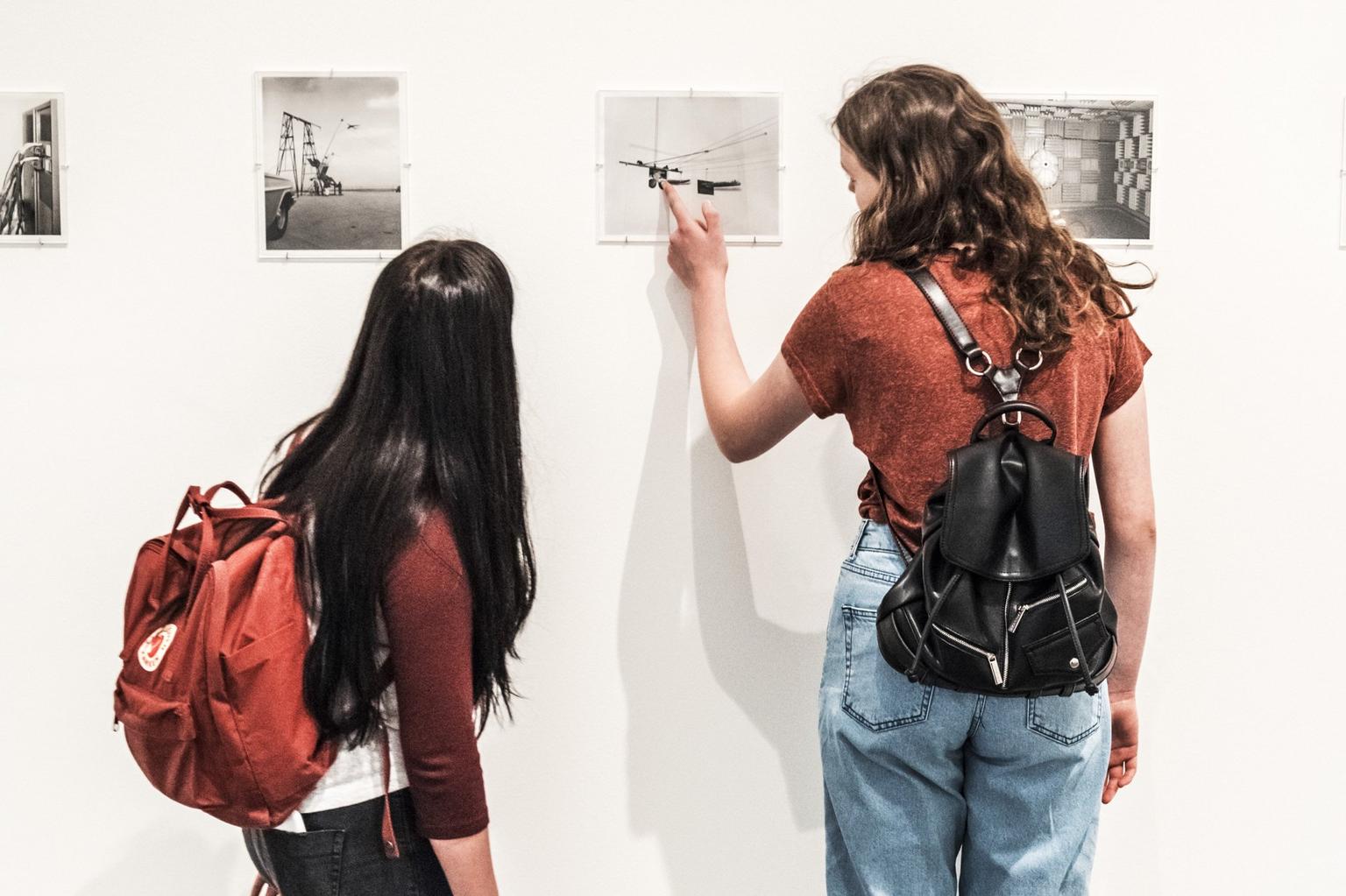A teacher's view: How museums and galleries help my students

Adam Creen is Head of Maths at a secondary school in Surrey. Passionate about the power of cultural experiences to boost young people’s wellbeing, Adam explains how galleries and museums have positively affected his students.
Last summer, I spent a morning carrying colourful wooden cubes back and forth across Tate Modern’s Turbine Hall. I wasn’t alone! There were around a hundred small children, their parents, and four other maths teachers, all doing the same thing.
This was part of a collaborative artwork by Rasheed Araeen, called Zero To Infinity, where 400 cubes in four colours were laid out in a square for us to disrupt. After an hour, though, a gallery attendant with a megaphone managed to do what I thought would be impossible: we got all the cubes back into the original, giant, square.
As a maths teacher, museums and galleries may not sound like the first point of call when seeking creative input for lesson planning. However, I’ve found admiring art created using mathematical patterns such as Fibonacci, or discovering historical figures that have used the art of maths to create some of the world’s most groundbreaking inventions, really beneficial.
These works of art and objects help bring to life how maths is used in the real world, helping to engage pupils in the value of mathematical skills.
New experiences lead to better understanding
The galleries, museums and lectures that my students attend are incredibly enriching, as it gives them experiences they would not otherwise have a chance to take part in.
What they see and do gives them a better understanding of their subject, but also gives them cultural capital and stirs a possibly lifelong interest in the art or culture that they see.
Museums and galleries put so much effort now into their educational support, from free exploratory visits for teachers, to the talks and activity sheets they provide on a visit. Young people can see such a wide variety of art in just one gallery, and come away with an understanding of how it fits into the wider subject.
At St Paul's Cathedral, for example, they have developed a series of maths workshops looking at the shapes and dimensions of the cathedral. Taking Sir Christopher Wren's idea that "The secret of architectural excellence is to translate the proportions of a dachshund into bricks, mortar and marble", young people can go round the cathedral with a toy dachshund measuring the structure.
There are also interactive building tools so they can recreate the dome and understand better how the structure remains stable.
Developed with maths teachers, these resources give students a way to understanding the building they would never get just walking round on a tour.
Thinking about planning your next trip?
Whether you’re a teacher, parent or young person – my message would be go and explore what cultural experiences your local community has to offer. With the Easter break coming up, it’s a great time to plan a visit.
If you’re a teacher I’d recommend looking at Art Fund’s Teacher Art Pass offer. From £25, the pass gives you access to hundreds of museums and galleries for free or at a discounted rate.
Cultural spaces have so much to offer, from boosting educational outcomes and fostering creativity to improving wellbeing. Why not plan your next trip?